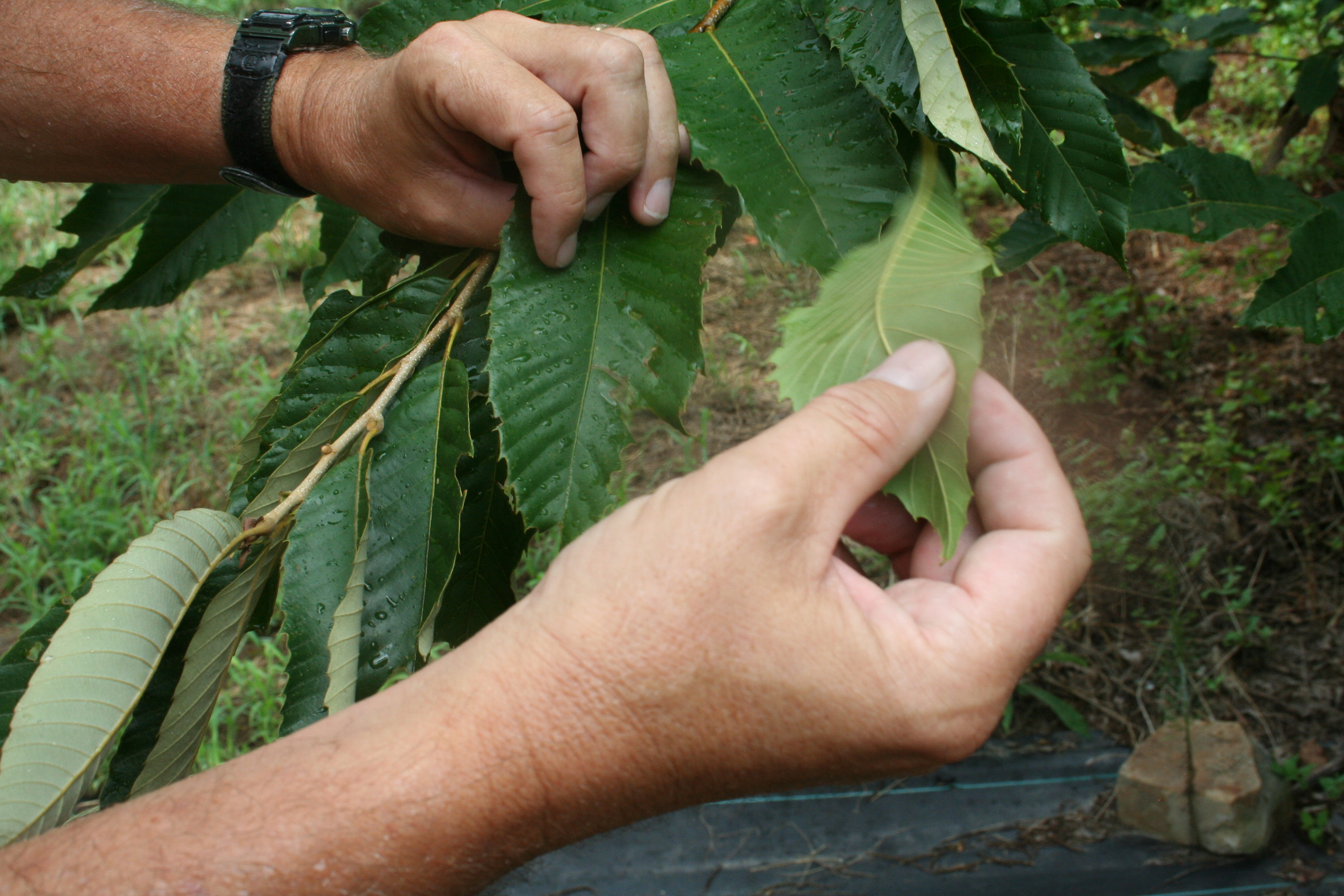 Martin Cipollini compares and contrasts leaves of the American chestnut tree, left, and the Chinese chestnut tree, at Berry College's mountain campus in Rome, Ga. Cipollini, professor of biology at Berry College, has been working in partnership with the Georgia Chapter of the American Chestnut Foundation throughout the years to restore the American chestnut tree, which was nearly wiped out in the 1950s by blight in southeastern forests.
Martin Cipollini compares and contrasts leaves of the American chestnut tree, left, and the Chinese chestnut tree, at Berry College's mountain campus in Rome, Ga. Cipollini, professor of biology at Berry College, has been working in partnership with the Georgia Chapter of the American Chestnut Foundation throughout the years to restore the American chestnut tree, which was nearly wiped out in the 1950s by blight in southeastern forests.ROME, Ga. - Martin Cipollini, professor of biology at Berry College, has been working in partnership with the Georgia Chapter of the American Chestnut Foundation to restore the American chestnut tree, which nearly was wiped out in the 1950s by blight in Southeastern forests.
By cross-pollinating some remaining American chestnuts with Chinese chestnut trees - which are immune to the blight that was caused by an infectious fungus - hybrid trees were created and now are growing in an orchard on Berry College's mountain campus.
But next year, Cipollini plans to kill them.
"We're going to put that fungus in each of these trees," he said as he stood between rows of chestnut trees in the orchard. "Next year we're going to try to kill them."
The fungal disease was introduced by frogs in New York during the early 1900s, Cipollini said, and it spread from tree to tree, infecting both Asian and American chestnuts. Only the Asian trees - particularly the Chinese chestnut - were able to resist the blight brought on by the fungus. The American chestnut was susceptible to the disease, and by the 1950s nearly all were wiped out.
"The only saving grace is that the chestnut can resprout from the roots," Cipollini said. "As a result of that, the tree wasn't killed entirely, instead of having large forests of trees producing nuts."
In the Berry orchard, there are not only the hybrid trees but also pure American chestnuts and pure Chinese chestnut trees. Cipollini said they are also going to infect the American chestnuts and Chinese chestnuts with the fungus.
The Chinese should be resistant and develop a canker that will heal over. The other trees, he said, will form cankers and that canker will expand. The point is to see if the hybrid trees will form cankers that heal as the Chinese chestnuts will.
He hopes some hybrid trees will resist the disease. For the ones that do, they will in turn be bred with more American trees. This process, which could take 30 years or longer, will be continued until the trees have more than 90 percent of American in their genetic backgrounds, but still are able to resist the blight.
Berry's orchard is "the headquarters, so to speak, for the breeding program for the state of Georgia," said Cipollini. "We've helped to establish about 100 orchard sites in the state. We are principally responsible for an orchard in Armuchee called the Henry-Berry College Orchard that was established last year with help from Faye and Ralph Henry."
Cipollini said if any of the hybrids can withstand the blight, they carry the right genes from the Chinese chestnut parent in their genetic histories. They then will look at the trees for other characteristics to see how close they are genetically to the American chestnut's.
"If it fits everything, that one may be one of the few we keep in the orchard," he said.
Only a few of the more than 200 trees in the orchard may remain, but that would be the next generation that would move forward in the breeding program.
"It takes four years to get the trees to the point where they can be tested, and the whole process from beginning to end takes anywhere from 10 to 12 years," he said.
Though the process is long, Cipollini was optimistic that in future decades, the American chestnut might be able to be reintroduced into the wild with a resistance to blight.